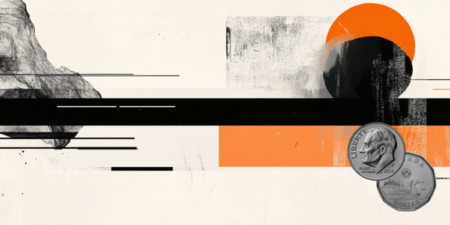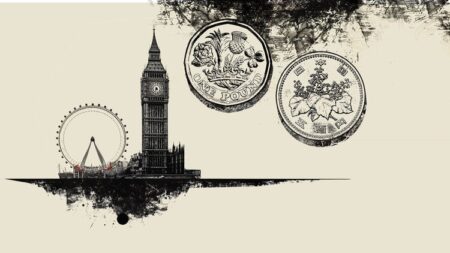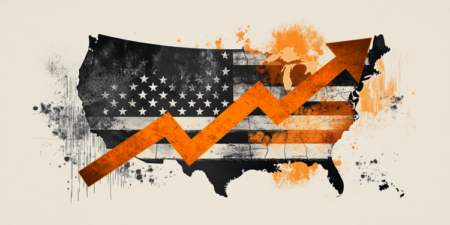- The core Personal Consumption Expenditures Price Index is expected to rise 0.3% MoM and 2.6% YoY in January.
- Markets largely expect the Federal Reserve to hold the policy setting unchanged in March and May.
- Annual PCE inflation is forecast to edge lower to 2.5% from 2.6% in December.
The United States (US) Bureau of Economic Analysis (BEA) is set to release the Personal Consumption Expenditures (PCE) Price Index data for January on Friday at 13:30 GMT. This index is the Federal Reserve’s (Fed) preferred measure of inflation.
Although PCE inflation data is usually seen as a big market mover, it might be difficult to assess its impact on the US Dollar’s (USD) valuation this time. Markets see virtually no chance of a Fed interest rate cut in March, and investors have been more interested in headlines surrounding US President Donald Trump’s policy changes and their potential impact on the economic outlook.
Anticipating the PCE: Insights into the Fed’s key inflation metric
The core PCE Price Index, which excludes volatile food and energy prices, is projected to rise 0.3% on a monthly basis in January, following the 0.2% increase recorded in December. Over the last twelve months, the core PCE inflation is forecast to soften to 2.6% from 2.8%. Meanwhile, the headline annual PCE inflation is seen retreating to 2.5% from 2.6% in the same period.
Following a 25 bps cut in December, lowering the Fed’s policy rate to the 4.25%-4.50% range, the central bank kept interest rates unchanged in the January decision. In the meeting Minutes released on February 19, the central bank removed earlier language suggesting inflation had “made progress” toward its 2% target, instead stating that the pace of price increases “remains elevated” to justify such a pause.
Previewing the PCE inflation report, TD Securities said: “We look for core PCE prices to register a notably weaker advance in January compared to the CPI equivalent’s 0.45% m/m increase. Headline PCE inflation should also come in softer at 0.30%. On a y/y basis, core PCE inflation is likely to drop by a notable three tenths to 2.5%—its lowest level since early 2021. Personal spending also likely fell for the first time since March.”
Economic Indicator
Core Personal Consumption Expenditures – Price Index (YoY)
The Core Personal Consumption Expenditures (PCE), released by the US Bureau of Economic Analysis on a monthly basis, measures the changes in the prices of goods and services purchased by consumers in the United States (US). The PCE Price Index is also the Federal Reserve’s (Fed) preferred gauge of inflation. The YoY reading compares the prices of goods in the reference month to the same month a year earlier. The core reading excludes the so-called more volatile food and energy components to give a more accurate measurement of price pressures.” Generally, a high reading is bullish for the US Dollar (USD), while a low reading is bearish.
Read more.
How will the Personal Consumption Expenditures Price Index affect EUR/USD?
Market participants will likely react to an unexpected reading in the monthly core PCE Price Index, which is not distorted by base effects. A print of 0.4% or higher in this data could support the US Dollar (USD) with the immediate reaction. On the other hand, a reading below 0.2% could have the opposite effect on the USD’s performance against its major rivals.
Nevertheless, the market reaction is likely to remain short-lived. According to the CME FedWatch Tool, investors see about a 98% probability of the Fed holding the policy settings unchanged in March and price in a 20% chance of a 25 bps rate cut in May. It will likely take several soft PCE inflation readings in succession before market participants see a stronger probability of a rate reduction in May.
Eren Sengezer, European Session Lead Analyst at FXStreet, shares a brief technical outlook for EUR/USD:
“The Relative Strength Index (RSI) indicator on the daily chart edges lower but manages to hold above 50, suggesting that EUR/USD loses upward momentum while keeping a slightly bullish bias.”
“On the downside, 1.0390-1.0380 (50-day Simple Moving Average (SMA), Fibonacci 23.6% retracement level of the November-January downtrend) aligns as the first support. In case EUR/USD makes a daily close below this level, technical sellers could take action and open the door for an extended decline toward 1.0300 (static level). Looking north, the first resistance could be spotted at 1.0520 (100-day SMA). Once EUR/USD starts using this level as support, 1.0570 (Fibonacci 50% retracement) and 1.0650 (Fibonacci 61.8% retracement) could be set as next bullish targets.”
Inflation FAQs
Inflation measures the rise in the price of a representative basket of goods and services. Headline inflation is usually expressed as a percentage change on a month-on-month (MoM) and year-on-year (YoY) basis. Core inflation excludes more volatile elements such as food and fuel which can fluctuate because of geopolitical and seasonal factors. Core inflation is the figure economists focus on and is the level targeted by central banks, which are mandated to keep inflation at a manageable level, usually around 2%.
The Consumer Price Index (CPI) measures the change in prices of a basket of goods and services over a period of time. It is usually expressed as a percentage change on a month-on-month (MoM) and year-on-year (YoY) basis. Core CPI is the figure targeted by central banks as it excludes volatile food and fuel inputs. When Core CPI rises above 2% it usually results in higher interest rates and vice versa when it falls below 2%. Since higher interest rates are positive for a currency, higher inflation usually results in a stronger currency. The opposite is true when inflation falls.
Although it may seem counter-intuitive, high inflation in a country pushes up the value of its currency and vice versa for lower inflation. This is because the central bank will normally raise interest rates to combat the higher inflation, which attract more global capital inflows from investors looking for a lucrative place to park their money.
Formerly, Gold was the asset investors turned to in times of high inflation because it preserved its value, and whilst investors will often still buy Gold for its safe-haven properties in times of extreme market turmoil, this is not the case most of the time. This is because when inflation is high, central banks will put up interest rates to combat it. Higher interest rates are negative for Gold because they increase the opportunity-cost of holding Gold vis-a-vis an interest-bearing asset or placing the money in a cash deposit account. On the flipside, lower inflation tends to be positive for Gold as it brings interest rates down, making the bright metal a more viable investment alternative.
Read the full article here
















